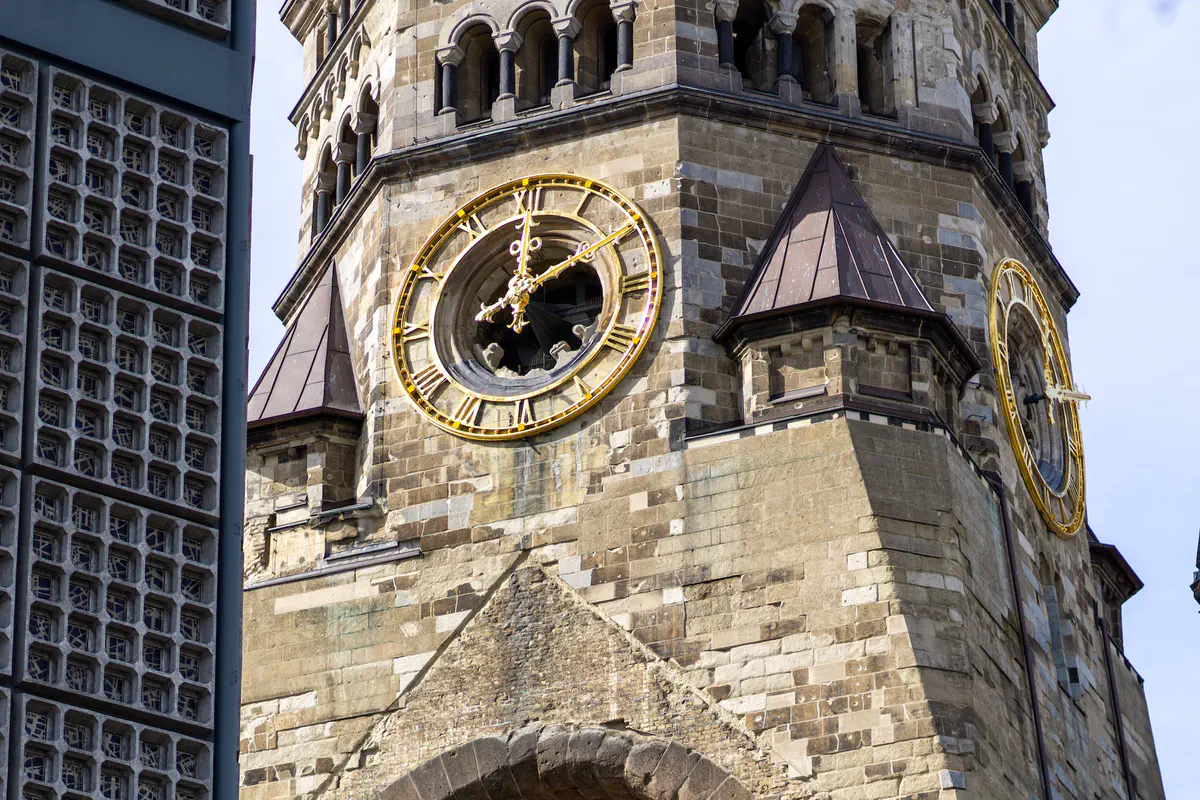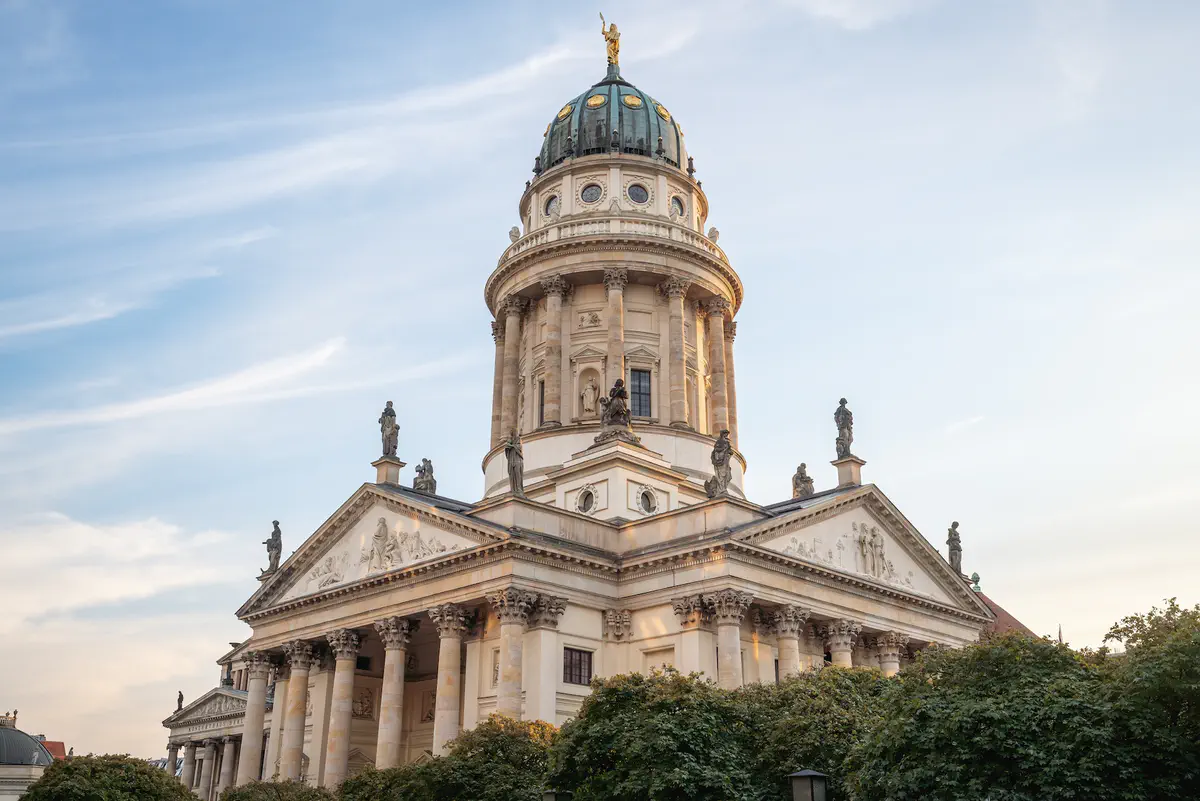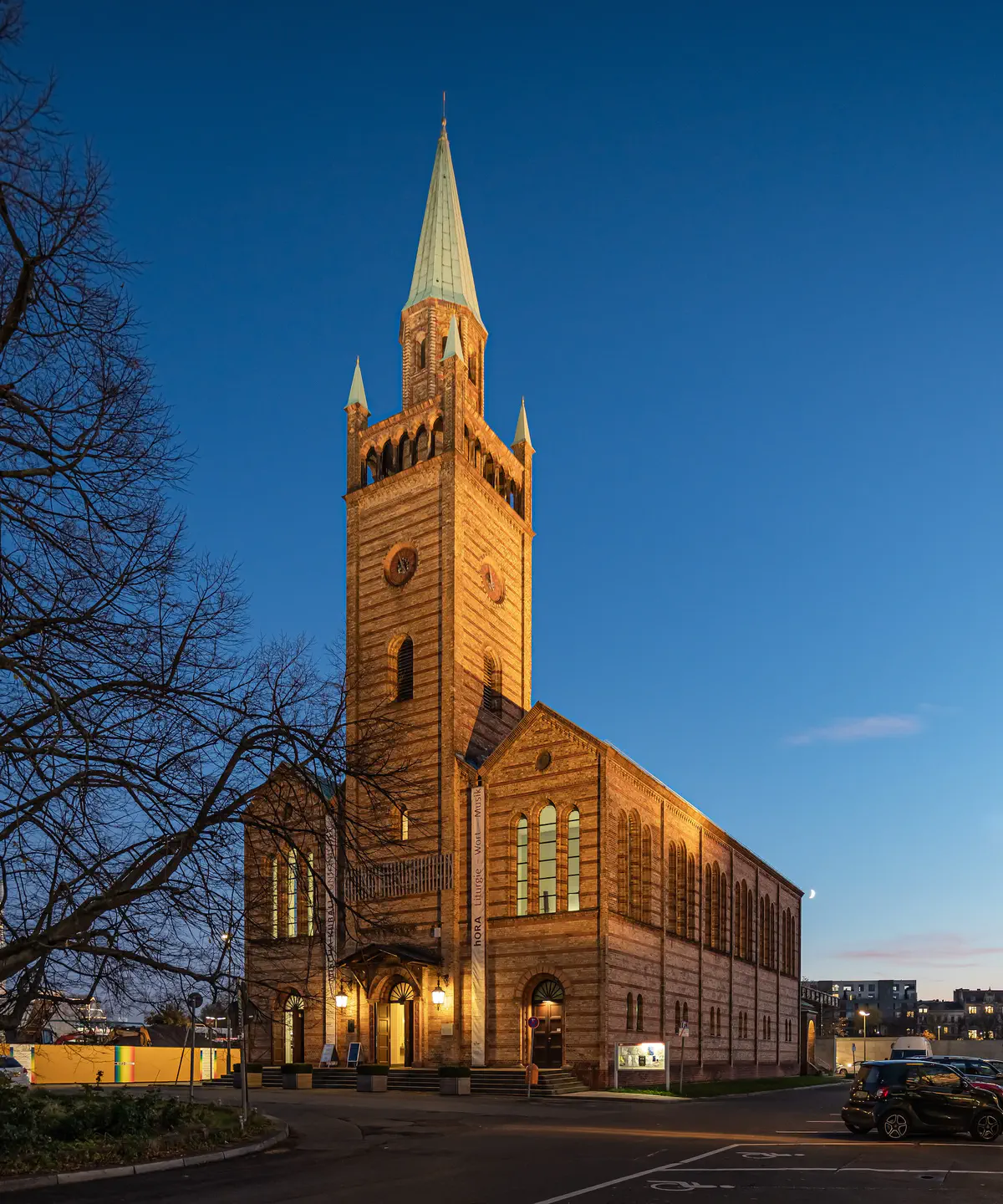Five Most Famous Churches in Berlin
Berlin is home to a vast number of church buildings, each reflecting the city’s rich historical, cultural, and theological diversity. With hundreds of churches spread across the capital, selecting a few to visit can be a challenge, especially for those with limited time. While the notion of “most famous” churches may vary depending on individual perspectives, the following list presents buildings of particular architectural, historical, and spiritual significance.
1. Kaiser-Wilhelm-Gedächtniskirche
(Kaiser Wilhelm Memorial Church)

This church is arguably the most famous church in Berlin, or at least in the former West Berlin. The church was built between 1891 and 1895 in the Neo-Romanesque style by Franz Schwechten in memory of Kaiser Wilhelm I.
The church was severely damaged during the Second World War. The tower ruins was preserved as a memorial against the evil of the war. A new four-part building ensemble consisting the nave, the church tower, the chapel, and the foyer was built by Egon Eiermann between 1959 and 1963 in the modern style.
Despite the fact that its location is surrounded by busy streets, the outside noise is well concelaed by the four-centimeter-thick double-walled construction of the central building, so that in the midst of the bustling City West, one might find a peaceful sanctuary for prayer and meditation.
The Kaiser Wilhelm Memorial Church is one of the most iconic landmarks in Berlin.
2. Kaiser-Friedrich-Gedächtniskirche
(Kaiser Friedrich Memorial Church)

Less famous is the Kaiser-Friedrich-Gedächtniskirche in Berlin-Tiergarten.
The original neo-Gothic church was built between 1892 and 1895 but partially destroyed in the Second World War. It was replaced by a modern church building from 1957 designed by architect Ludwig Lemmer.
Strong conflicts between Pastor Gustav Eichstätt and Johannes Magerstädt arose within the parish council at the beginning of the Nazi era. Eichstätt joined the German Christians, while Magerstädt belonged to the Confessing Church.
Magerstädt, who later had been appointed acting parish leader, lacked the strength to revitalize parish life after the war. The parish was re-established in January 1947 through the instigation of the new parish pastor, Fritz Schmidt-Clausing.
Today, the church who belongs to the Evangelischen Kirchengemeinde Tiergarten is rented to the International Reformed Evangelical Church (IREC) Berlin, a lively english speaking church based on traditional Reformed teaching.
3. Berliner Dom
(Berlin Cathedral)

This church is a neo-Renaissance building, which was built between 1894 and 1905 on behalf of Wilhelm II according to a design by Julius Raschdorff. It is not a cathedral in the strict sense of the word: it is not the seat of a bishop.
Before the current shape, the first cathedral was built in 1536, followed by the second cathedral built around 1747 in the Baroque style on behalf of Friedrich II.
Located on the UNESCO World Heritage Site designated Museum Island, Berlin Cathedral is the largest Protestant church in Germany and one of the most important dynastic burial sites in Europe. It has a Sauer-organ of 1905, which with its 7269 pipes, 113 registers, four manuals and pedal is the largest fully pneumatic High Romantic organ in Germany. The organ concerts are highly recommended.
4. Französischer Dom
(French Cathedral)

Französischer Dom (French Cathedral) is located at Gendarmenmarkt in Berlin’s Mitte district, probably the most beautiful square in Berlin. Like the Berlin Cathedral, the French Cathedral was also commissioned by Friedrich II, while the Baroque style building was designed by Carl von Gontard.
It is a domed tower that was added and built directly next to the French Friedrichstadt Church between 1780 and 1785. The French Friedrichstadt Church was built between 1701 and 1705 for Reformed religious refugees from France, the Huguenots.
Since 1935, the church has housed the Huguenot Museum. Being damaged in the Second World War, the church was rebuilt from 1978 to 1983, faithful to the original exterior and modernized inside.
5. St.-Matthäus-Kirche
(St. Matthew Church)

St.-Matthäus-Kirche (St. Matthew Church) is a neo-Romanesque church located in the middle of Kulturforum, between Neue Nationalgalerie and the Philharmonie.
The Lutheran theologian and prominent representative of the Confessing Church, Dietrich Bonhoeffer, was ordained as a pastor in this church on 15 November 1931. He served as a pastor in this church from 1931 to 1943.
The church also hosts contemporary art exhibitions, concerts, panel discussions, sermon series, and much more. On 31 August 2024, the IREC Berlin Choir also hosted a concert in this church.
Looking Ahead: A New Home for IREC Berlin
Among these notable churches, the Kaiser-Friedrich-Gedächtniskirche will become the new home of IREC Berlin starting 1 June 2025. Until then, services are held at Fuldastraße 48.
IREC Berlin invites all—residents and visitors—to experience worship grounded in traditional Reformed theology in a welcoming, English-speaking community. The congregation is not only shaped by its historical setting but thrives in offering spiritual fellowship, biblical teaching, and vibrant worship.
